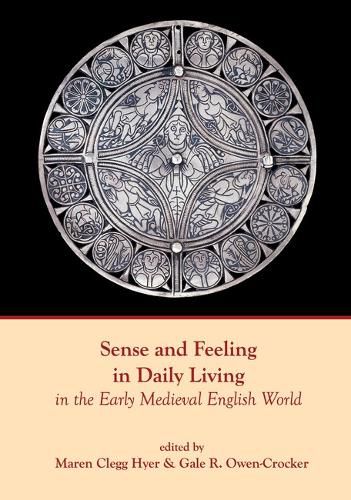Readings Newsletter
Become a Readings Member to make your shopping experience even easier.
Sign in or sign up for free!
You’re not far away from qualifying for FREE standard shipping within Australia
You’ve qualified for FREE standard shipping within Australia
The cart is loading…






Sense and Feeling in Daily Living in the Early Medieval English World seeks to illuminate important aspects of daily living and the experience of the environment through sense and emotion, using archaeological, art and textual sources. Twelve papers explore sight, sound, taste, smell, touch, and emotions such as anger, horror, grief and joy.
Similar in theme and method to the first, second and third volumes in the Daily Living in the Anglo-Saxon World series, the collected articles illuminate how an understanding of the sensory and emotional landscape that helped form the daily lives of the peoples and the environments of early medieval England can inform the study of England before the Norman Conquest. The sights, smells, and sounds that informed the physical and emotional landscape of town, scriptoria, and hall, for example, explain urban planning, literary imagery and emotional attachment evident among the early medieval English peoples. Experienced senses and emotions are thus as central to understanding the inner and outer landscape of the pre-Conquest English as crafts, towns or water structures.
$9.00 standard shipping within Australia
FREE standard shipping within Australia for orders over $100.00
Express & International shipping calculated at checkout
Sense and Feeling in Daily Living in the Early Medieval English World seeks to illuminate important aspects of daily living and the experience of the environment through sense and emotion, using archaeological, art and textual sources. Twelve papers explore sight, sound, taste, smell, touch, and emotions such as anger, horror, grief and joy.
Similar in theme and method to the first, second and third volumes in the Daily Living in the Anglo-Saxon World series, the collected articles illuminate how an understanding of the sensory and emotional landscape that helped form the daily lives of the peoples and the environments of early medieval England can inform the study of England before the Norman Conquest. The sights, smells, and sounds that informed the physical and emotional landscape of town, scriptoria, and hall, for example, explain urban planning, literary imagery and emotional attachment evident among the early medieval English peoples. Experienced senses and emotions are thus as central to understanding the inner and outer landscape of the pre-Conquest English as crafts, towns or water structures.